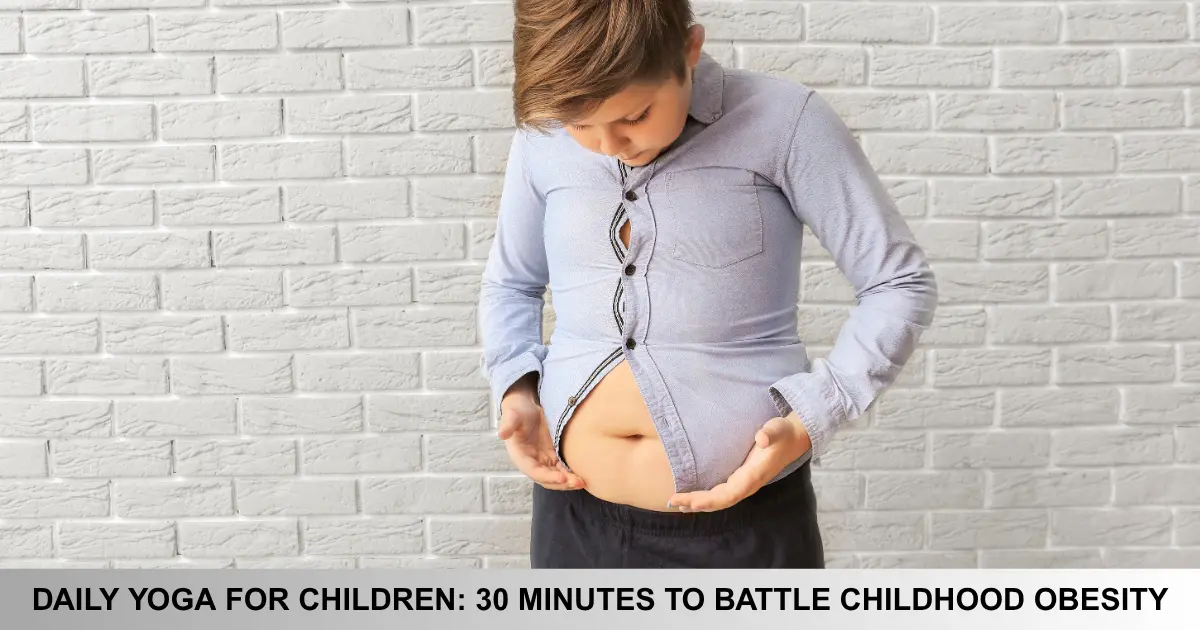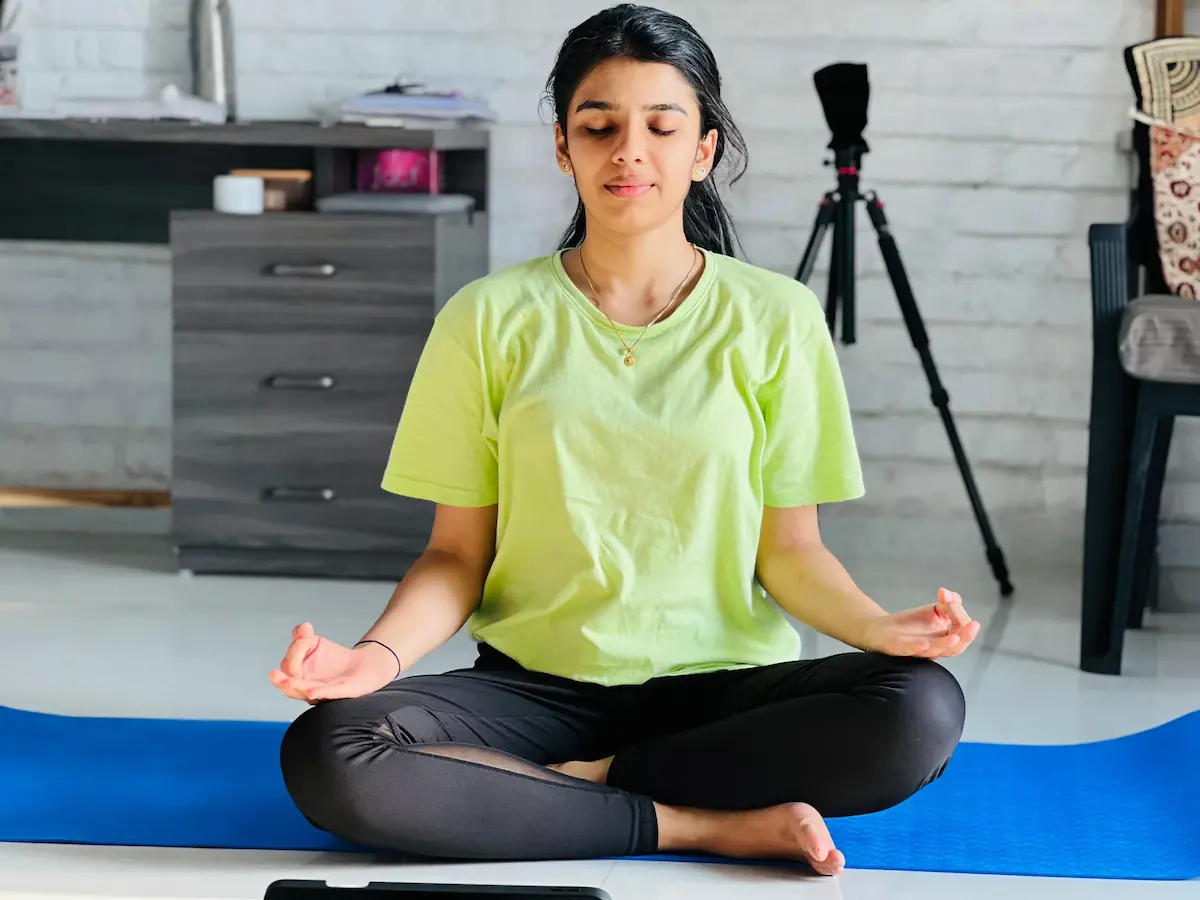Childhood obesity is a growing global concern linked to modern sedentary lifestyles and unhealthy habits. Yoga offers a holistic, natural solution that not only promotes physical fitness but also mental clarity and healthy habits from a young age. Here’s a unique daily yoga routine tailored for children to help them combat and prevent childhood obesity in a fun, engaging, and mindful manner.
How Yoga Helps Address Childhood Obesity
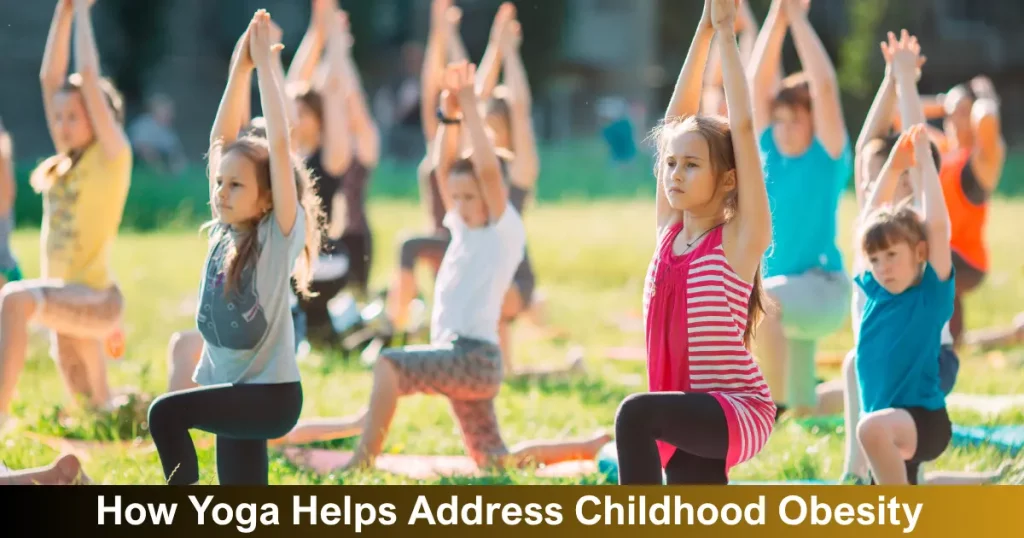
Yoga is much more than physical exercise. It enhances body tone, builds confidence, and improves holistic well-being. Regular practice develops strong mind-body balance, which leads to better control over lifestyle factors like diet and screen time, contributing to healthier growth and development.
30-Minute Daily Yoga Routine for Kids
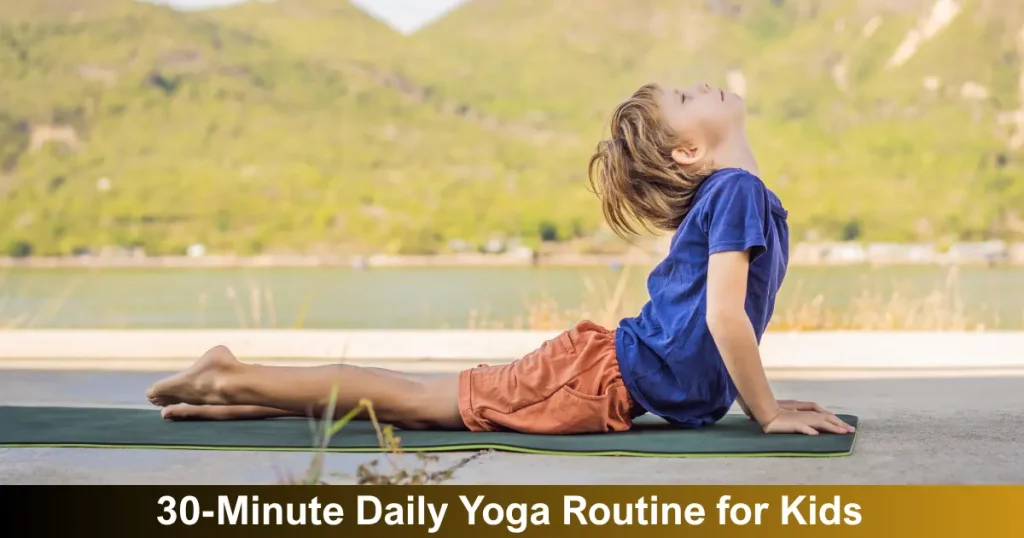
Before starting: Perform this routine in a calm, peaceful environment preferably on a mat early in the morning. Combine it with healthy eating and reduced screen time for best results. Begin by reciting the following traditional prayer for focus and positivity:
योगेन चित्तस्य पदेन वाचां। मलं शरीरस्य च वैद्यकेन॥
योऽपाकरोत्तं प्रवरं मुनीनां। पतञ्जलिं प्राञ्जलिरानतोऽस्मि॥
1. Tadasana (Mountain Pose)
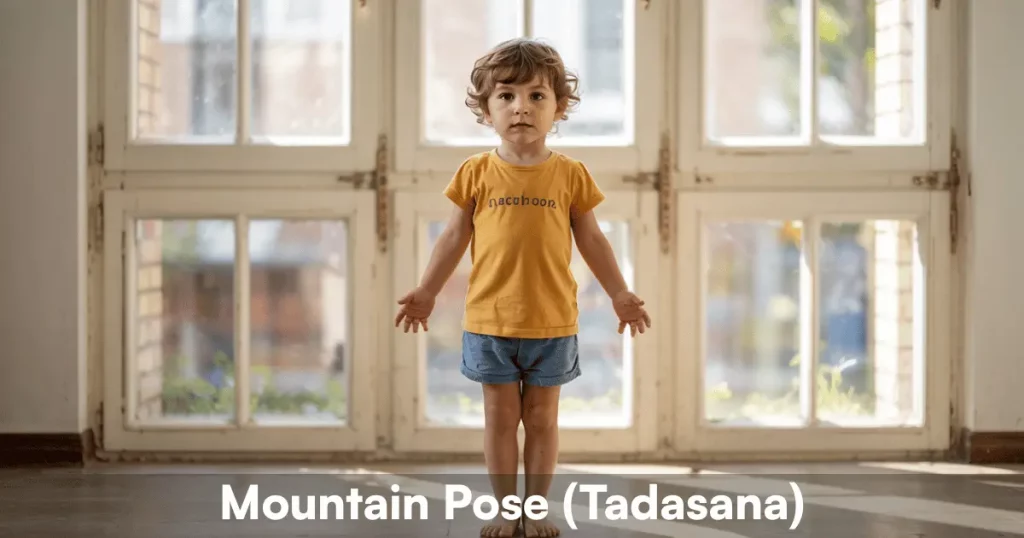
How to Perform
- Stand straight with feet together.
- Raise both arms upward with elbows straight.
- Look straight ahead, focus on a point.
- Slowly raise your heels as high as possible.
- Hold for a count of 10.
- Repeat 4 more times, then relax for 5 seconds.
Benefits: Improves posture, enhances balance and concentration.
Precautions: Don’t strain your neck while looking ahead; keep breathing steady.
2. Parsva Urdhva Hastasana (Side Stretch Pose)

How to Perform
- Stand straight with feet together.
- Raise left arm up keeping elbow straight.
- Bend body to the right side without leaning forward.
- Hold for a count of 10.
- Return to center. Repeat with right arm bending to the left.
- Perform the set 2 more times, then relax 5 seconds.
Benefits: Increases flexibility in the spine and waist, tones abdominal muscles.
Precautions: Avoid bending forward or twisting the torso; keep movements slow.
3. Paschimottanasana (Seated Forward Bend)

How to Perform
- Sit with legs fully stretched and joined.
- Raise arms upward.
- Bend forward and hold your toes or place palms on the soles.
- Try touching your head to the knees without bending knees.
- Hold for 10 seconds.
- Repeat 2 more times, then relax 5 seconds.
Benefits: Enhances flexibility of spine and hamstrings, calms the mind.
Precautions: Don’t force the forward bend if tightness causes pain; keep knees straight.
4. Bhadrasana (Butterfly Pose with Knee Flapping)
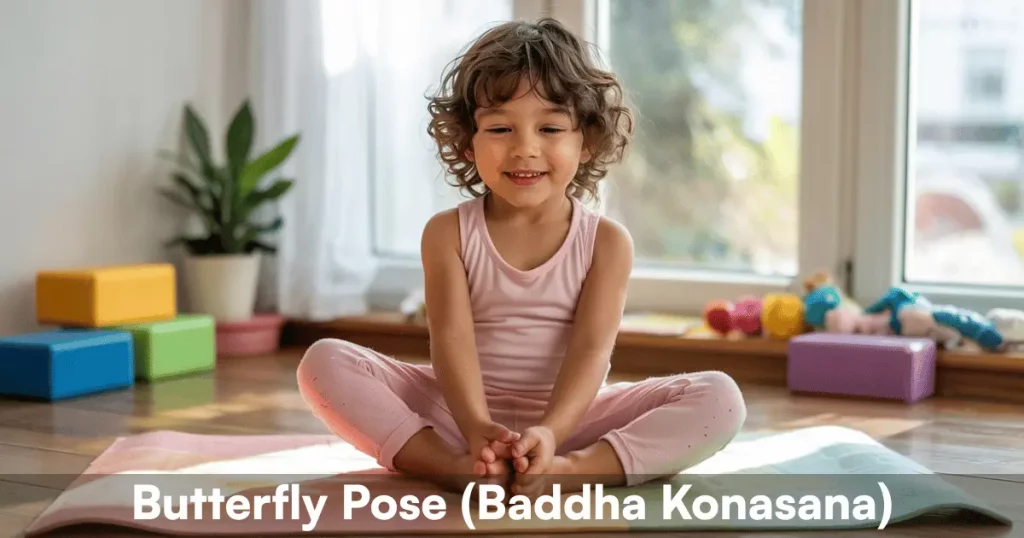
How to Perform
- Sit and flex knees so soles touch each other.
- Hold union of toes with hands, elbows straight.
- Flap knees up and down continuously for 20 counts.
- Repeat 2 more times, then relax.
Benefits: Opens hips, improves digestion, strengthens lower back.
Precautions: Keep breathing smooth; avoid forceful flapping if knees hurt.
5. Ustrasana (Camel Pose)
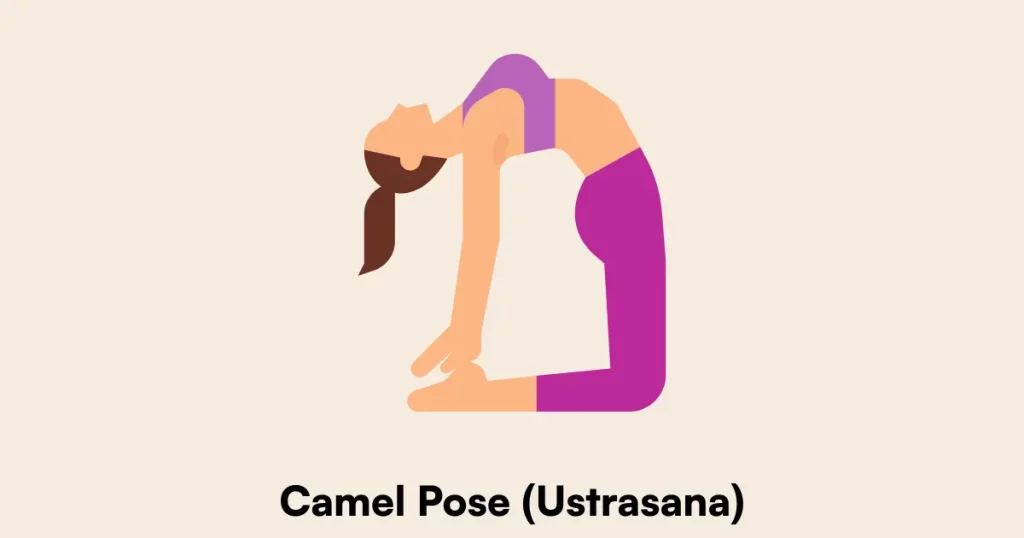
How to Perform
- Kneel upright on the floor.
- Arch backward to hold feet with palms.
- Keep thighs vertical.
- Hold for 10 seconds.
- Rise gently and repeat 2 more times, then relax.
Benefits: Stretches the front body, improves spinal flexibility.
Precautions: Avoid if you have neck or back injuries; don’t compress the lower back excessively.
6. Pavanamuktasana (Wind-Relieving Pose)

How to Perform
- Lie on your back (supine).
- Raise legs to 90 degrees.
- Flex knees and bring them to abdomen.
- Hold knees tightly and try to touch nose with the knee.
- Hold 10 seconds.
- Release gently; relax 5 seconds.
Benefits: Improves digestion, relieves gas and bloating, strengthens abdominal muscles.
Precautions: Don’t strain the neck; keep movements slow and controlled.
7. Dhanurasana (Bow Pose)
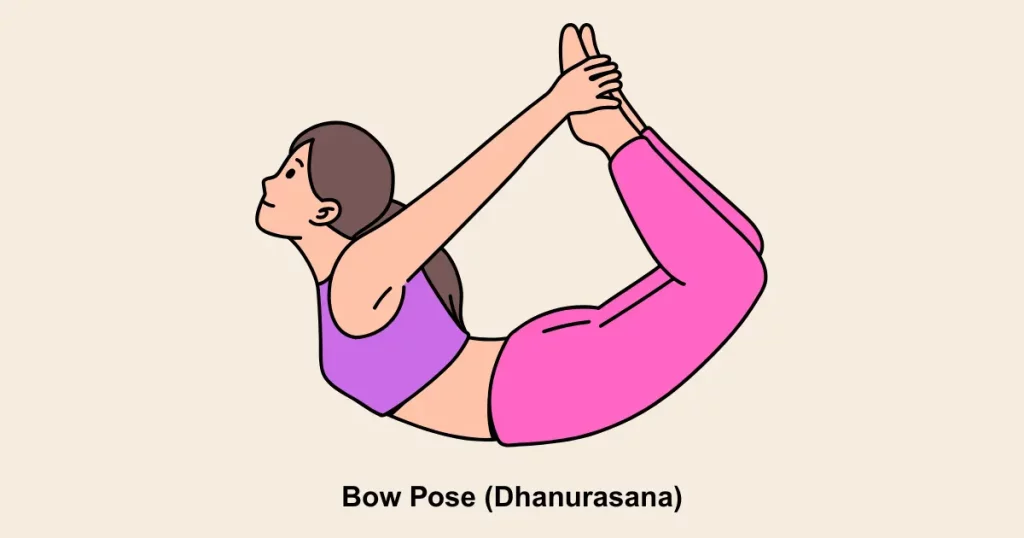
How to Perform
- Lie on your stomach (prone).
- Flex knees, reach back and hold ankles with palms.
- Lift chest and legs upwards forming a bow shape.
- Hold for 10 seconds.
- Release and relax for 5 seconds.
Benefits: Strengthens back muscles, tones abdomen, increases spine flexibility.
Precautions: Avoid this pose if you have back injuries or pain.
8. Bhujangasana (Cobra Pose)
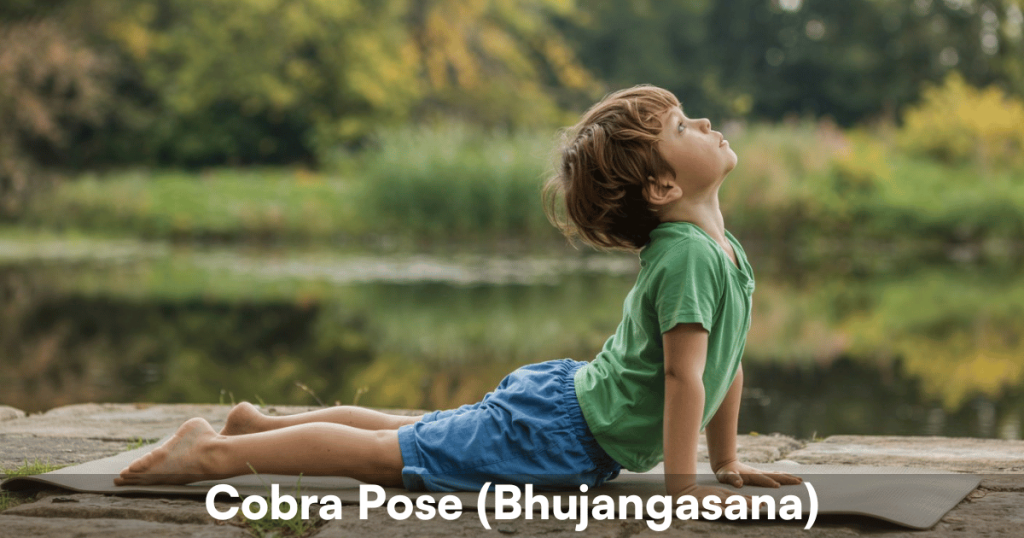
How to Perform
- Lie prone with feet joined.
- Place palms near chest.
- Lift chest upward gently.
- Hold 10 seconds.
- Repeat 2 more times, then relax.
Benefits: Improves spinal strength, relieves stress, opens chest and lungs.
Precautions: Don’t overextend the back; avoid if lower back pain exists.
9. Breathing Exercises
a. Kapalbhati (Skull Shining Breath)
- Sit comfortably with eyes closed.
- Inhale deeply.
- Exhale forcefully while pumping the belly; continue exhaling quickly for 50 counts.
- Relax 5 seconds. Repeat twice.
Benefits: Detoxifies lungs, improves metabolism, energizes the body.
Precautions: Avoid if you have high blood pressure or heart issues.
b. Nadi Shodhana (Alternate Nostril Breathing)
- Sit comfortably with eyes closed.
- Close right nostril with thumb; inhale deeply through left nostril.
- Close left nostril with ring finger; hold breath for 5 seconds.
- Exhale through right nostril.
- Repeat on opposite side.
- Do 4 cycles; then relax 15 seconds.
Benefits: Balances mind and body, reduces anxiety, improves concentration.
Precautions: Practice slowly; don’t hold breath too long initially.
Frequently Asked Questions (FAQs)
Q1: Can children with no yoga experience follow this routine?
Yes, this routine is beginner-friendly and designed specifically for kids. Parents can assist initially to ensure safety.
Q2: How often should children practice this routine?
Daily practice for 30 minutes is ideal to see benefits in weight management and overall health.
Q3: What if a child feels pain during any pose?
Stop immediately and consult a yoga instructor or healthcare professional. Avoid forcing any posture.
Q4: Can yoga replace other physical activities?
Yoga complements other forms of exercise and lifestyle changes but should not be the only physical activity.
Q5: Is diet also important?
Absolutely. Yoga combined with a healthy diet and reduced screen time provides the best results against childhood obesity.
Incorporating this balanced and child-friendly yoga routine can significantly aid in managing childhood obesity by fostering physical activity and mental well-being. Establishing these habits early ensures a healthier, happier future for children.
If you would like, I can also help you with tips on integrating this yoga routine with diet guidelines or family involvement strategies.
